Single-Cell Analysis of Subcutaneous Fat Reveals Profibrotic Cells That Correlate With Visceral Adiposity in HIV
- PMID: 38820087
- PMCID: PMC11651702
- DOI: 10.1210/clinem/dgae369
Single-Cell Analysis of Subcutaneous Fat Reveals Profibrotic Cells That Correlate With Visceral Adiposity in HIV
Abstract
Context: Cardiometabolic diseases are common in persons with HIV (PWH) on antiretroviral therapy (ART), which has been attributed to preferential lipid storage in visceral adipose tissue (VAT) compared with subcutaneous adipose tissue (SAT). However, the relationship of SAT-specific cellular and molecular programs with VAT volume is poorly understood in PWH.
Objective: We characterized SAT cell-type specific composition and transcriptional programs that are associated with greater VAT volume in PWH on contemporary ART.
Methods: We enrolled PWH on long-term ART with a spectrum of metabolic health. Ninety-two participants underwent SAT biopsy for bulk RNA sequencing and 43 had single-cell RNA sequencing. Computed tomography quantified VAT volume and insulin resistance was calculated using the Homeostasis Model Assessment 2 Insulin Resistance (HOMA2-IR).
Results: VAT volume was associated with HOMA2-IR (P < .001). Higher proportions of SAT intermediate macrophages (IMs), myofibroblasts, and MYOC+ fibroblasts were associated with greater VAT volume using partial Spearman's correlation adjusting for age, sex, and body mass index (r = 0.34-0.49, P < .05 for all). Whole SAT transcriptomics showed PWH with greater VAT volume have increased expression of extracellular matrix (ECM)- and inflammation-associated genes, and reduced expression of lipolysis- and fatty acid metabolism-associated genes.
Conclusion: In PWH, greater VAT volume is associated with a higher proportion of SAT IMs and fibroblasts, and a SAT ECM and inflammatory transcriptome, which is similar to findings in HIV-negative persons with obesity. These data identify SAT cell-type specific changes associated with VAT volume in PWH that could underlie the high rates of cardiometabolic diseases in PWH, though additional longitudinal studies are needed to define directionality and mechanisms.
Keywords: HIV; inflammation; insulin resistance; single-cell RNA sequencing; visceral adipose tissue.
© The Author(s) 2024. Published by Oxford University Press on behalf of the Endocrine Society.
Figures

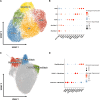
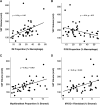
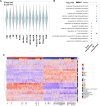
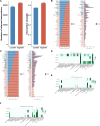
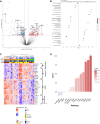
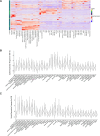
Similar articles
-
The Primacy of Adipose Tissue Gene Expression and Plasma Lipidome in Cardiometabolic Disease in Persons With HIV.J Infect Dis. 2025 Feb 20;231(2):e407-e418. doi: 10.1093/infdis/jiae532. J Infect Dis. 2025. PMID: 39657693 Free PMC article.
-
High visceral fat to subcutaneous fat ratios portend a poor prognosis in patients with advanced endometrial cancer.Gynecol Oncol. 2022 Dec;167(3):496-501. doi: 10.1016/j.ygyno.2022.09.011. Epub 2022 Sep 28. Gynecol Oncol. 2022. PMID: 36180305 Free PMC article.
-
The subcutaneous adipose transcriptome identifies a molecular signature of insulin resistance shared with visceral adipose.Obesity (Silver Spring). 2024 Aug;32(8):1526-1540. doi: 10.1002/oby.24064. Epub 2024 Jul 5. Obesity (Silver Spring). 2024. PMID: 38967296 Free PMC article.
-
Growth hormone axis treatments for HIV-associated lipodystrophy: a systematic review of placebo-controlled trials.HIV Med. 2011 Sep;12(8):453-62. doi: 10.1111/j.1468-1293.2010.00906.x. Epub 2011 Jan 25. HIV Med. 2011. PMID: 21265979
-
Morbidity and Mortality Risk Among People With HIV and Central or Visceral Adiposity: A Targeted Literature Review.Clin Infect Dis. 2025 Jul 18;80(6):1306-1328. doi: 10.1093/cid/ciae543. Clin Infect Dis. 2025. PMID: 39692509 Review.
Cited by
-
The Primacy of Adipose Tissue Gene Expression and Plasma Lipidome in Cardiometabolic Disease in Persons With HIV.J Infect Dis. 2025 Feb 20;231(2):e407-e418. doi: 10.1093/infdis/jiae532. J Infect Dis. 2025. PMID: 39657693 Free PMC article.
-
Subcutaneous adipose tissue gene transcripts associated with progressive myosteatosis in persons with HIV.AIDS. 2025 Oct 1;39(12):1739-1748. doi: 10.1097/QAD.0000000000004264. Epub 2025 Jun 11. AIDS. 2025. PMID: 40528404
-
Lipodystrophy in HIV: Evolving Challenges and Unresolved Questions.Int J Mol Sci. 2025 Jul 8;26(14):6546. doi: 10.3390/ijms26146546. Int J Mol Sci. 2025. PMID: 40724797 Free PMC article. Review.
References
-
- Nansseu JR, Bigna JJ, Kaze AD, Noubiap JJ. Incidence and risk factors for prediabetes and diabetes mellitus among HIV-infected adults on antiretroviral therapy: a systematic review and meta-analysis. Epidemiology. 2018;29(3):431‐441. - PubMed
-
- Ghaben AL, Scherer PE. Adipogenesis and metabolic health. Nat Rev Mol Cell Biol. 2019;20(4):242‐258. - PubMed
MeSH terms
Grants and funding
LinkOut - more resources
Full Text Sources
Medical
Molecular Biology Databases
Research Materials

